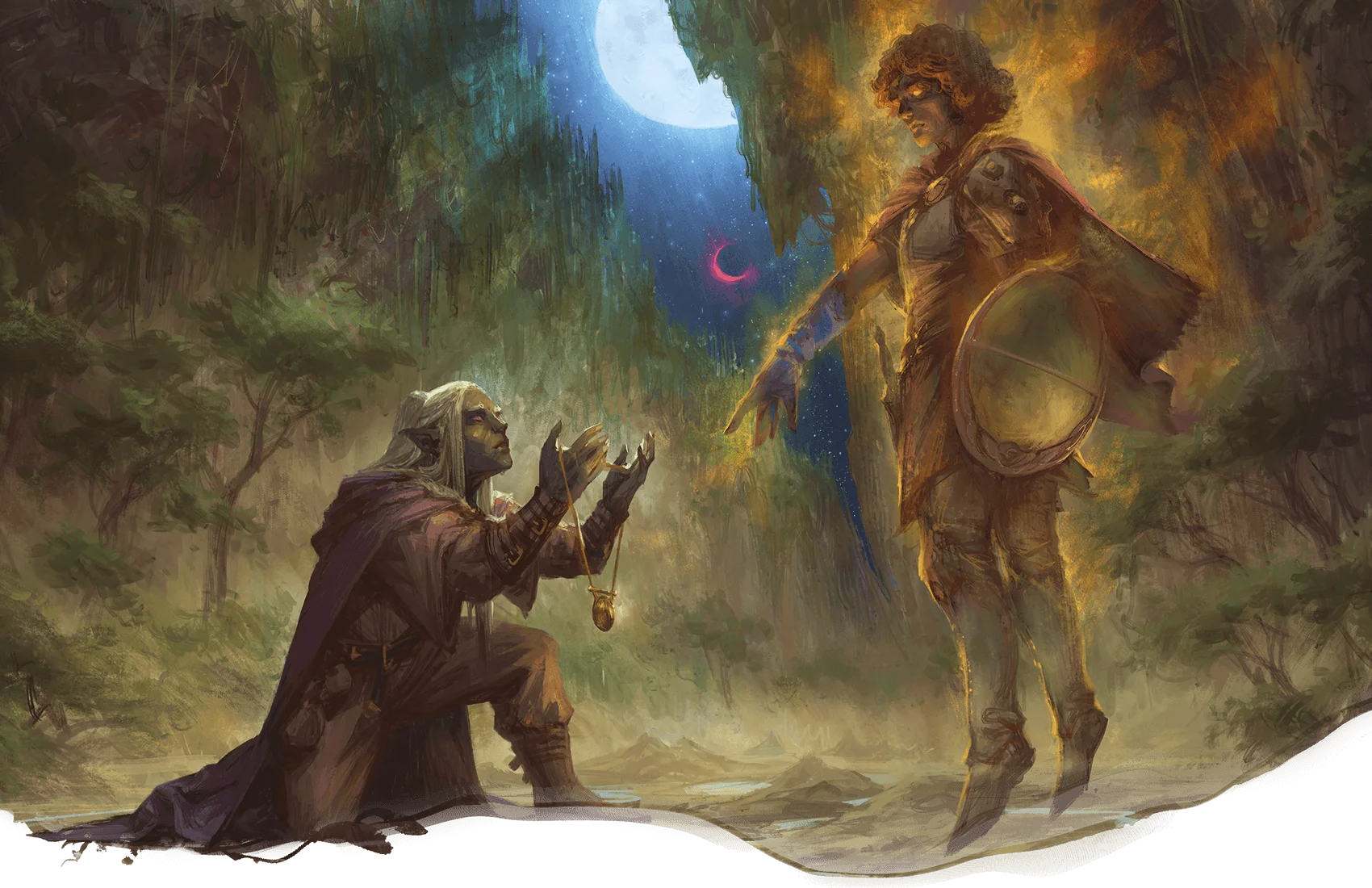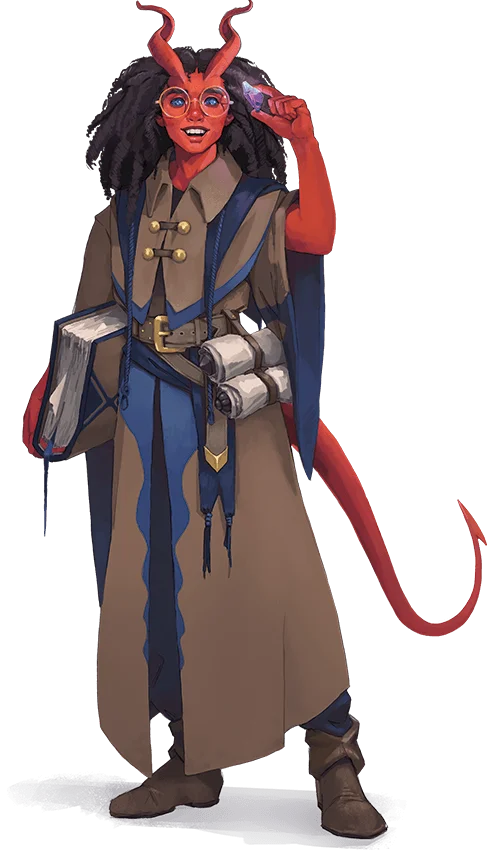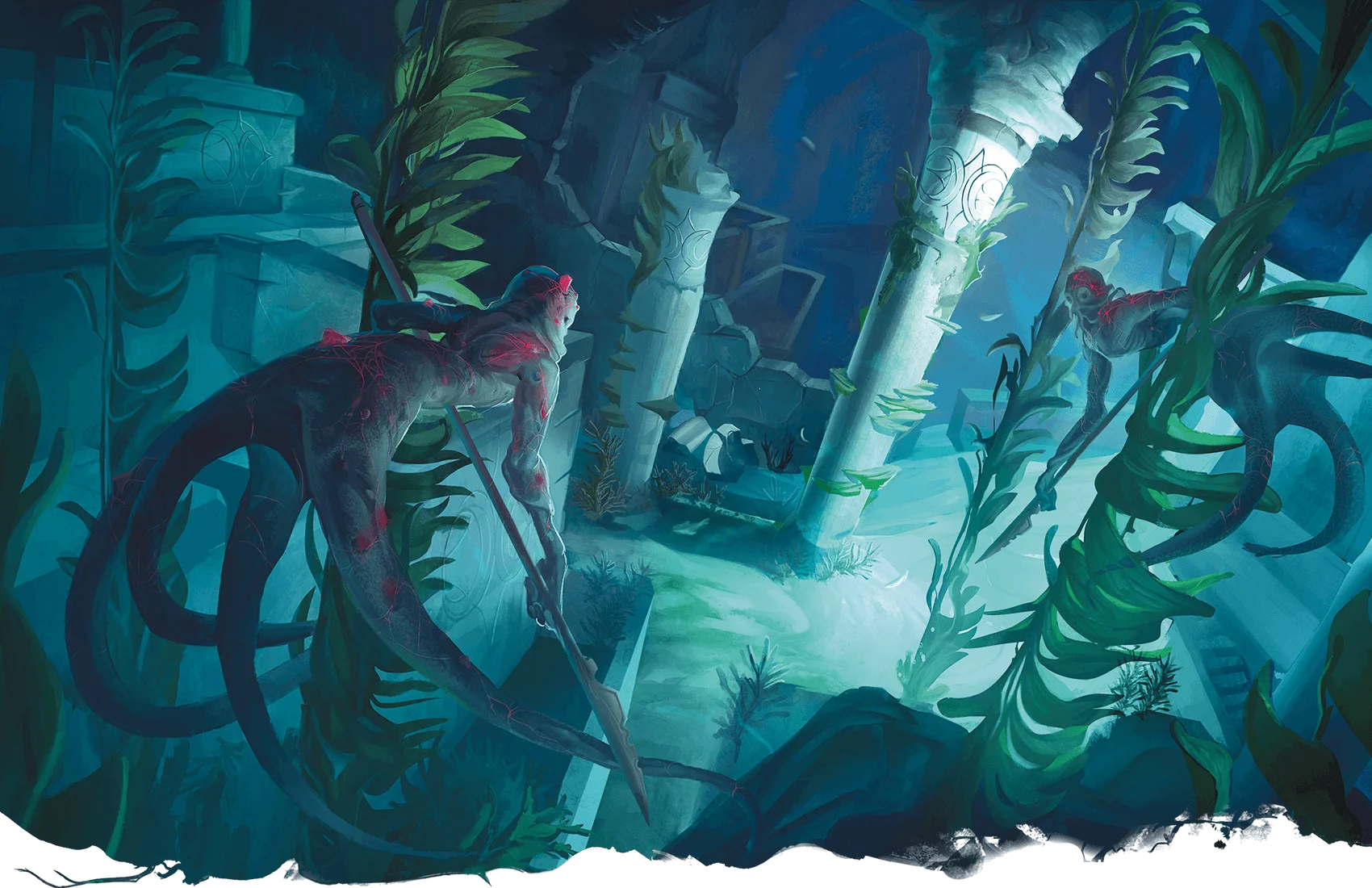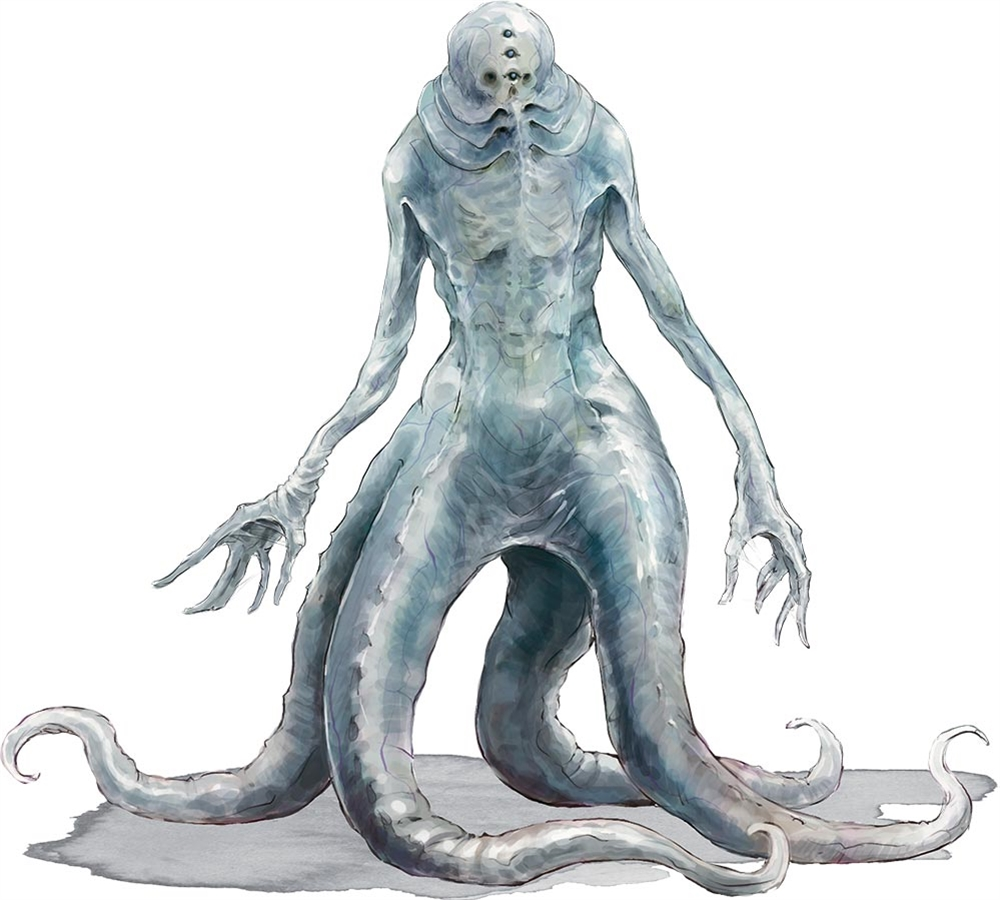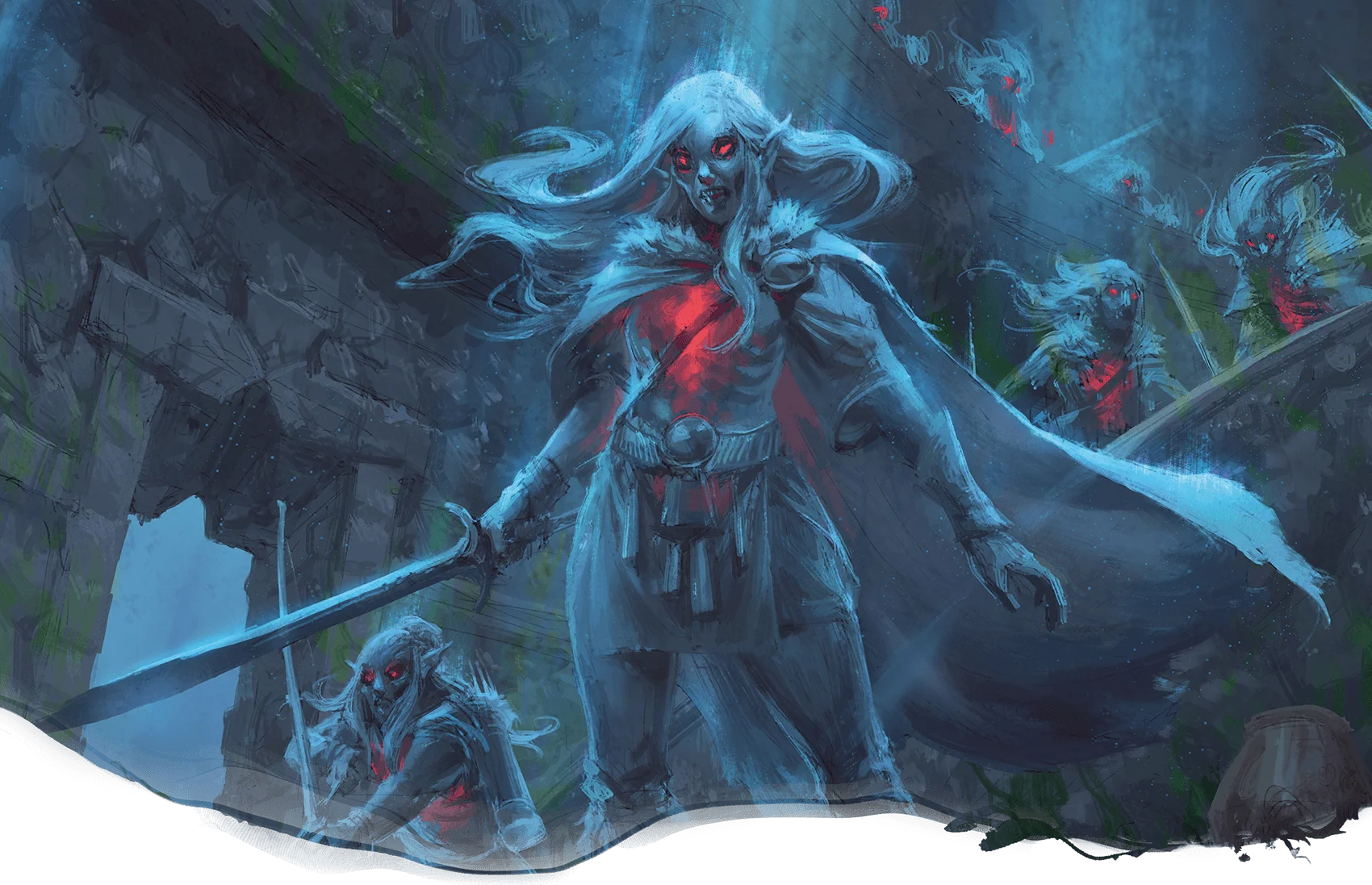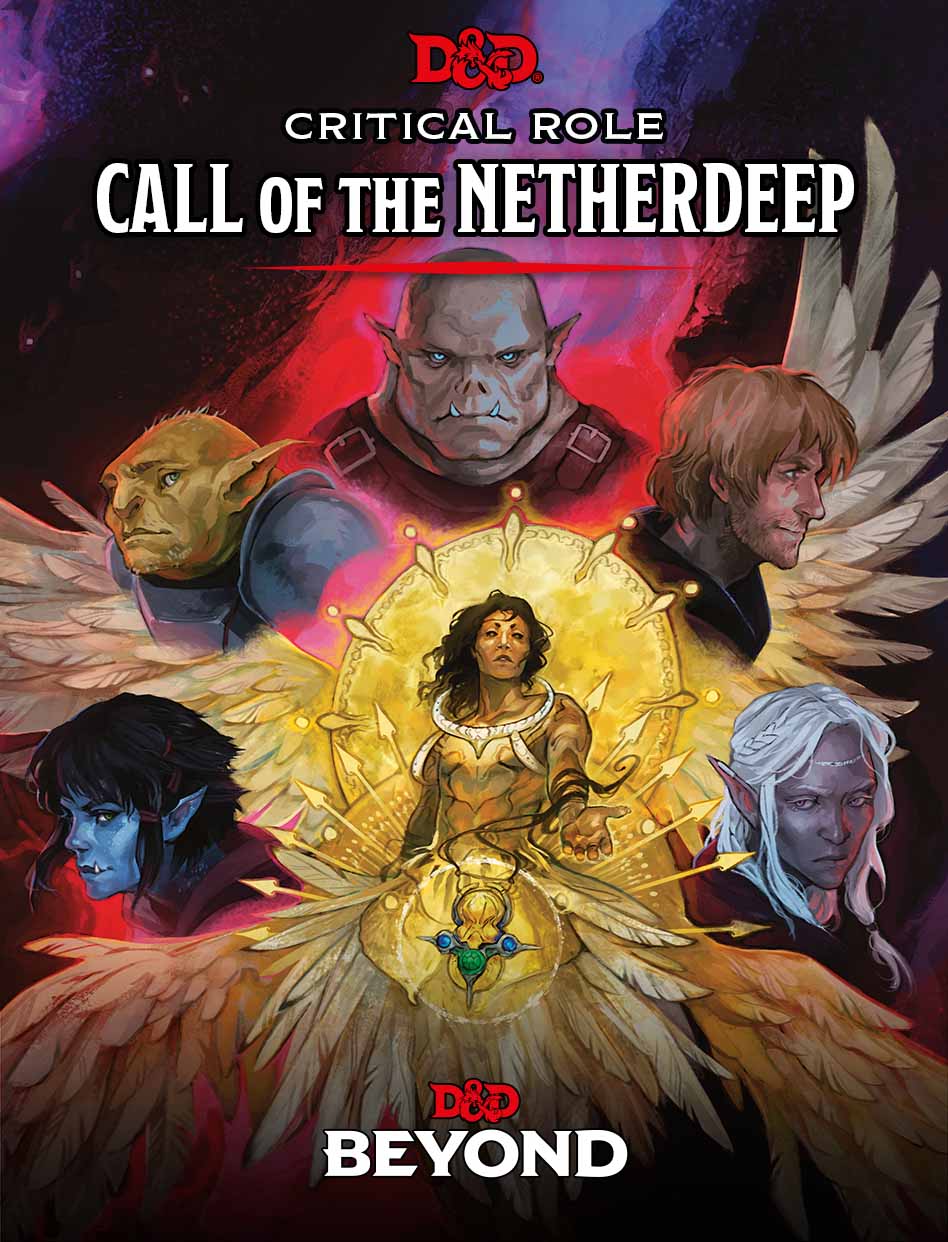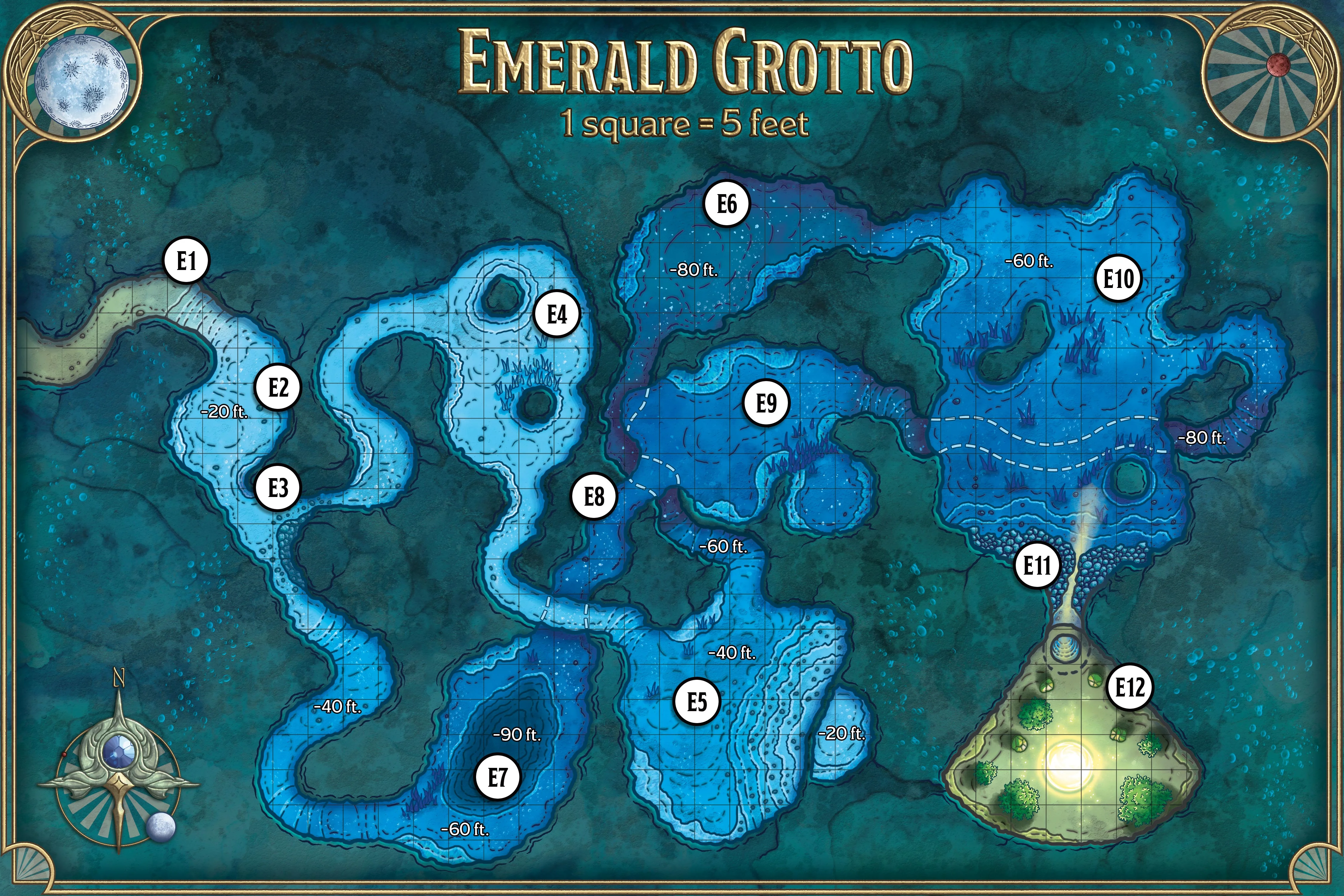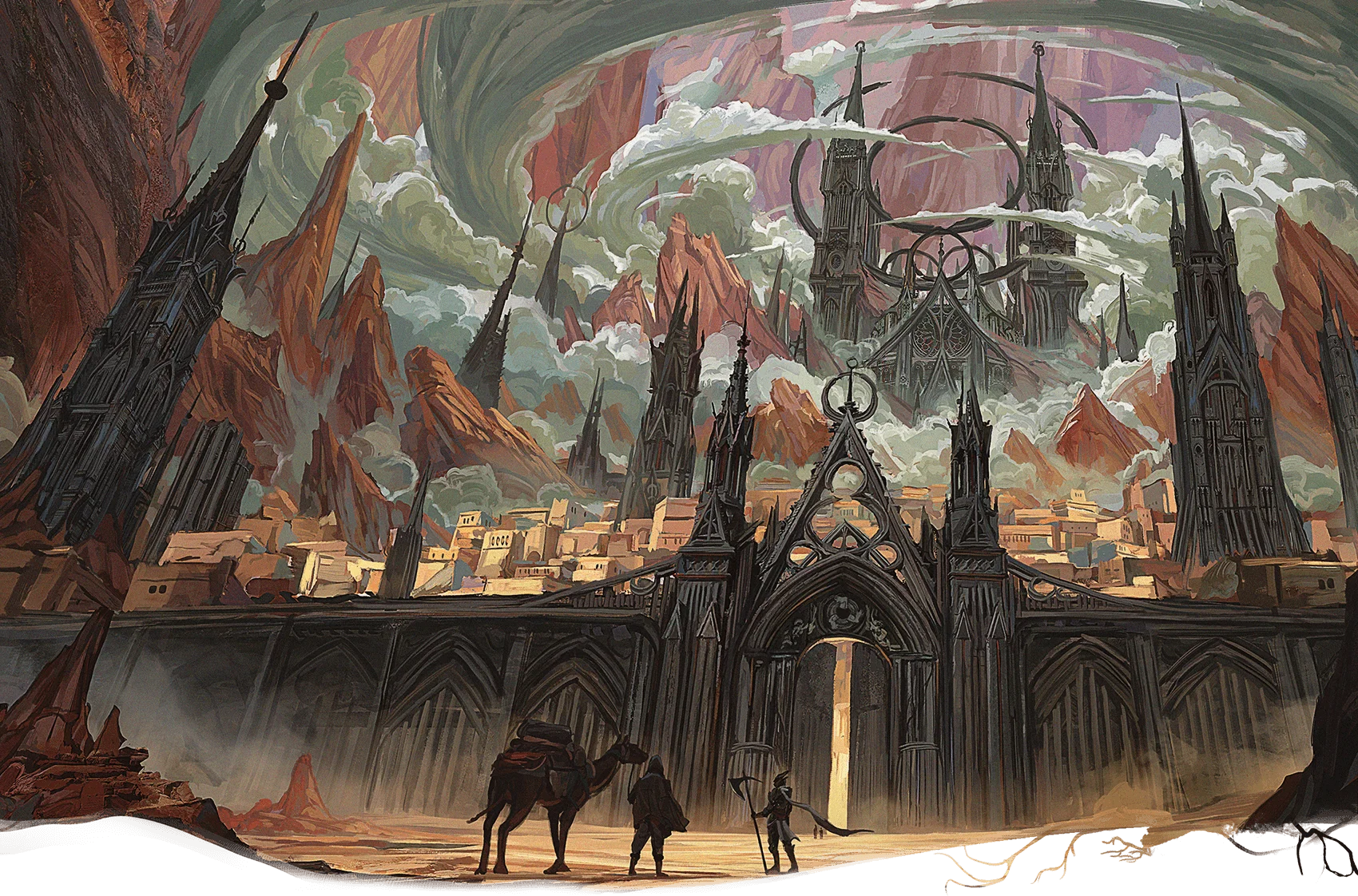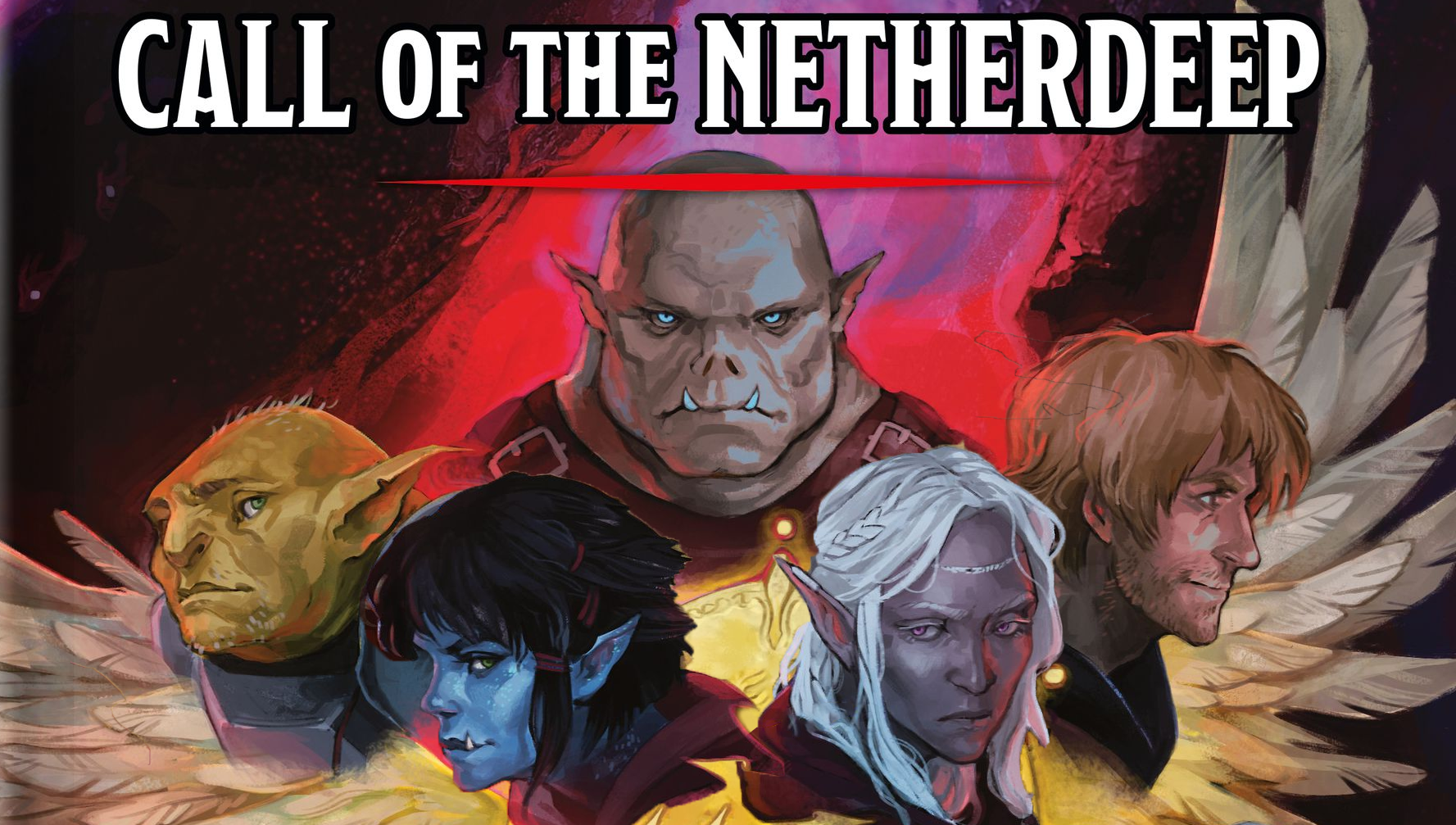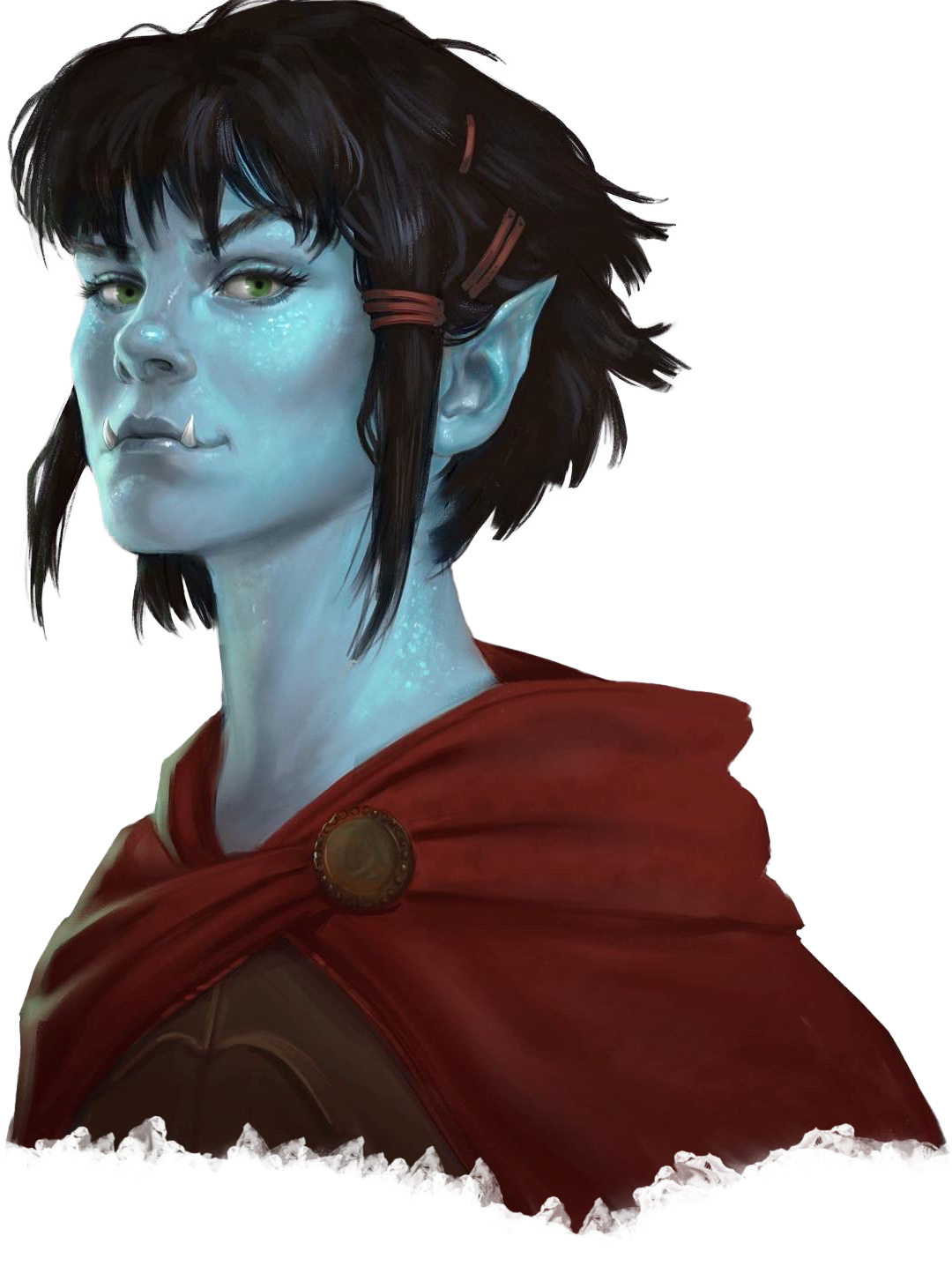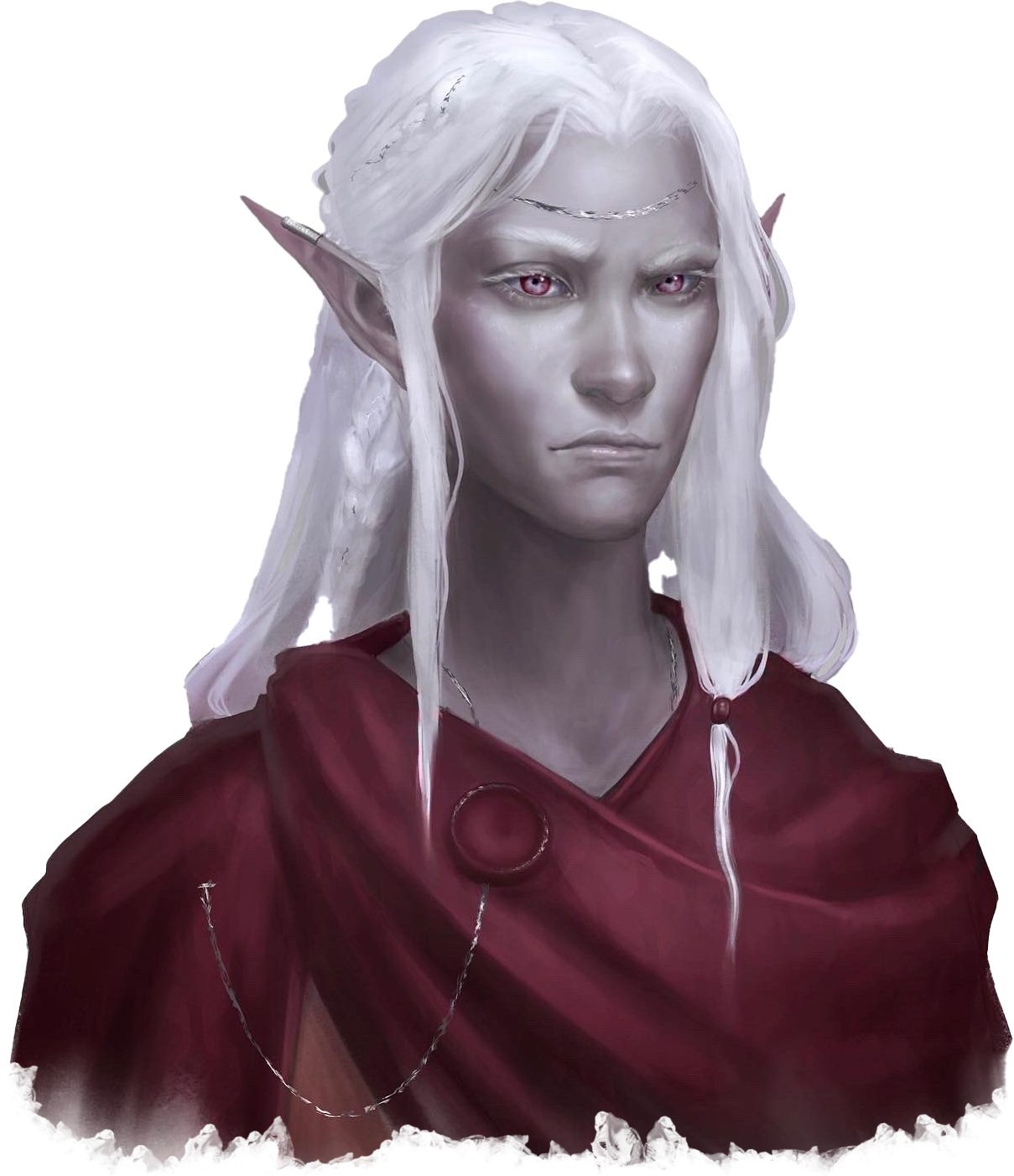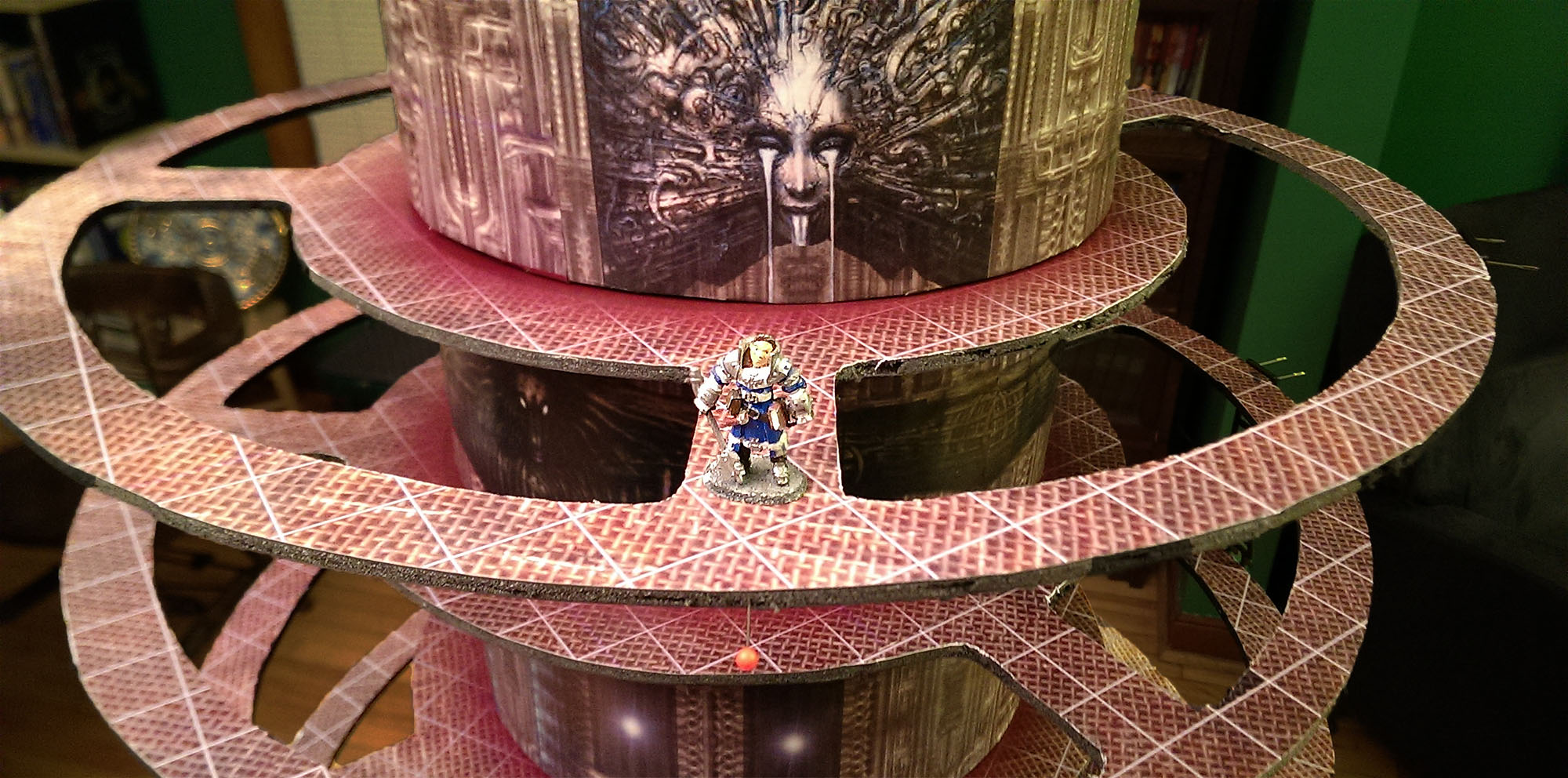
The Mrathrach Machine can be reached from Aggah-Shan’s catacombs (see Part 2) or from the Temple of Deep Chaos (Night of Dissolution, p. 47).
This light remix adapts “The Mrathrach Machine” adventure by Monte Cook from Night of Dissolution (p. 75). You will need the original adventure in order to use this material, which features:
- A few quality of life enhancements to make it easier for the GM to manage the adventure.
- An enhanced key featuring bonus content.
- The resources necessary for creating a full ten-level model of the Machine for use with miniature figures.
The model of the Mrathrach Machine uses resources shared by users of the old Okay You’re Turn forums on Monte Cook’s website, but they have also been remixed and modified.
LEVELS
The levels have the Mrathrach Machine have been enhanced to have special features in the remix, and I’ve shuffled the sequencing of the Machine levels to enhance the flow of the scenario with these special features in mind. Use the following guide to determine where the dungeon levels intersecting the Machine chamber are located (Night of Dissolution, p. 81).
| LEVEL 1 | Face of Mrathrach | Top Entrance (Area 13) |
| LEVEL 2 | Wicker Rhodintor | |
| LEVEL 3 | Energy Portals | Mutated Thralls (Areas 1-3) |
| LEVEL 4 | Entrance from the Long Passage | |
| LEVEL 5 | Ebon Machines | |
| LEVEL 6 | Ebon Machines | |
| LEVEL 7 | Ebon Machines | Storage Level (Areas 4-7) |
| LEVEL 8 | Chaostechnicians (Areas 8-10) | |
| LEVEL 9 | Energy Portals | |
| LEVEL 10 | Skull Foci | Rhodintor Nests (Areas 11-12) |
TOP LEVEL: Area 13 and the connection to Aggah-Shan’s Catacombs, which were previously located on the Bottom Level, have been moved to the top level.
ENTRANCE FROM THE LONG PASSAGE: The Long Passage from the Temple of Deep Chaos ends in a door leading to Level 4 of the Machine. See Night of Dissolution, p. 73 for a description of the passage.
BOTTOM LEVEL: Area 13 on the map here can be rekeyed as an additional instance of Area 11 (a rhodintor nest).
ADVERSARY ROSTER
This adversary roster for the Mrathrach Machine supersedes any creatures listed in the Night of Dissolution location key.
- Active creatures are normal adversaries who are actively working on the Machine. They are initially occupied in the location indicated.
- Patrols are moving through and around the Machine and are actively alert for intruders. For those located in the Machine Shaft, you can randomize which level they’re currently on by rolling 1d10.
- Resting creatures are sleeping or otherwise not on alert. They make Perception checks with disadvantage and are less likely to respond actively to threats unless a general alarm is raised or they are specifically fetched by other NPCs for aid.
- Stationary are creatures who will not move from the listed location. They are included here to fully disambiguate the location key.
| ACTIVE | |
| Hao Adus* | Level 8 (Area 9) |
| Legire Endaw* | Level 8 (Area 10) |
| Caldor* | Level 10 (Area 12) |
| Rhodintor, Kravren (x3) | Level 8 (Area 10) |
| Rhodintor, Kravren* (x5) | Machine Shaft (split between two random levels) |
| PATROLS | |
| Venom-Shaped Thralls* (x2) | Machine Shaft |
| Mrathrach Protectors (x3) | Machine Shaft |
| Caldor's Cat* | 50% Level 10 (Area 12) / 50% with Caldor |
| RESTING | |
| Venom-Shaped Thralls* (x12) | Level 3 (Caves) |
| Rhodintor, Sarycal | Level 7 (Area 7, meditating) |
| STATIONARY | |
| Cloaker | Level 1 (Area 13) |
| Wraiths (1d3, confused) | Interior |
| Zaug | Interior |
* Carry teleport stabilizers to negate negative effects of energy portals. (Venom-shaped thralls have them surgically fused to their carapace. Caldor’s cat has it built into its clockwork mechanisms.)
LESSER MRATHRACH PROTECTORS: In addition to the foes listed above, when the Machine begins to destabilize (see below), lesser Mrathrach protectors sprout from the machine:
- Outside the Machine: 1d6 per round
- Inside the Machine: 2d6 per round
- Maximum: 12 in either case.
MRATHRACH PROTECTORS
You can think of the Mrathrach protectors as an extrusion of the machine — protective drones, a technomantic immune response, or just the raw reflex of a mad demigod. Whatever analogy resonates best with you. They are vaguely arachnic in character, although they only have four legs ending in sharp spikes. They go scuttling across the surface of the Machine, and multiply when it is threatened or in need of repair.
MRATHRACH PROTECTOR, LESSER
Small construct, neutral evil
Armor Class 14 (natural)
Hit Points 35 (10d6)
Speed 50 ft.
STR 14 (+2), DEX 14 (+2), CON 11 (+0), INT 10 (+0), WIS 12 (+1), CHA 8 (-1)
Saving Throws Con +2
Skills Athletics +4, Perception +3
Senses darkvision 60 ft.
Damage Immunities: poison, psychic
Condition Immunities charmed, exhaustion, frightened, paralyzed, petrified, poisoned
Challenge 2 (450 XP)
Proficiency Bonus +2
Self Repair. The protector regains 3 hit points at the start of its turn. The protector does not regain these hit points if it is reduced to 0 hp.
ACTIONS
Claw. Melee Weapon Attack: +5 to hit, reach 5 ft., one target. Hit: 11 (2d8+2) piercing damage.
MRATHRACH PROTECTOR, GREATER
Medium construct, neutral evil
Armor Class 17 (natural)
Hit Points 110 (20d8+20)
Speed 60 ft.
STR 18 (+4), DEX 14 (+2), CON 13 (+1), INT 10 (+0), WIS 12 (+1), CHA 8 (-1)
Saving Throws Con +4
Skills: Athletics +7, Perception +4
Senses darkvision 60 ft.
Damage Immunities: lightning, poison, psychic
Condition Immunities charmed, exhaustion, frightened, paralyzed, petrified, poisoned
Challenge 7 (2,900 XP)
Proficiency Bonus +3
Self Repair. The protector regains 5 hit points at the start of its turn. The protector does not regain these hit points if it is reduced to 0 hp.
Pounce. If the protector moves at least 20 ft. straight towards a creature and then hits it with a claw attack on the same turn, the target must succeed on a DC 15 Strength saving throw or be knocked prone. If the target is prone, the protector can make one claw attack against it as a bonus action.
ACTIONS
Claw. Melee Weapon Attack: +5 to hit, reach 5 ft., one target. Hit: 40 (4d8+2) piercing damage.
MRATHRACH MACHINE – OVERVIEW
TAINT: This entire Machine Shaft is a tainted location. Tainted effects include:
- Prismatic spray from the destruction of the Face of Mrathrach (Level 1).
- Chaotic teleport on Level 3 or Level 9.
- An exploding ebon machine (Levels 5-7)
Design Note: 3E rules for taint can be found here. I may attempt to adapt these to 5E as part of this Remix in the future. As an alternative, you might use the 5E rules for Madness (DMG, p. 258) or simply eschew this aspect of the Machine entirely.
TAKING DAMAGE: If a character on the scaffolding suffers damage, they must succeed on a Dexterity saving throw (DC 8 + 1 per 10 damage taken). On a failure, they are knocked off the scaffolding, but may attempt an additional DC 18 Dexterity saving throw to catch themselves on the edge (rather than plummeting down the shaft).
Playtest Tip: Don’t forget to have NPCs try to push the PCs off the scaffolding.
INNER RING – MOVING PARTS: PCs on the inner ring must make a DC 12 Dexterity saving throw each round. On a failure, they are knocked off the scaffolding by some part of the Machine which has unexpectedly jutted or spun out, but they may attempt an additional DC 18 Dexterity saving throw to catch themselves on the edge.
- NPCs are immune to this effect due to their familiarity with the machinery, unless unable to move.
STEAM VENTING: There is a 1 in 6 chance per level of steam being vented out of the machine.
- Target: A random character on that level (and any other characters in a line with them).
- Inner Ring: 4d6 fire damage, DC 14 Dexterity saving throw for half damage.
- Outer Ring: 2d6 dire damage, DC 14 Dexterity saving throw for half damage.
- NPCs are immune to this effective due to their familiarity with the machinery, unless unable to move or in line with the randomly determined target.
FALLING:
- Second Chance: Characters falling more than 50 ft. through this chamber can attempt a second Dexterity saving throw (DC 15) to catch themselves on a lower level. The character still suffers falling damage for the distance they fell.
- House Rule – Catching a Falling Character: If it seems as if a character on a lower level would be in a position to catch a falling character, they can use a bonus action to do so by making a successful Dexterity saving throw (DC 10 + 1 per 10 feet fallen). The falling character still suffers damage for the distance they fell.
CHAOS EFFECTS
The Machine Shaft is permeated with chaotic energy. Each time a character takes an action requiring an ability check in the chamber or casts a spell, there is a 1 in 20 chance the action is afflicted by the energy. Roll on the Chaos Effect table.
Playtest Tip: This element works best if you lean heavily into describing the strange, probability-defying distortions wrought by the chaos energy of the Machine. Use the mechanical effects listed here as inspiration, but customize the exact effect to the current circumstance and the action being attempted.
TABLE: CHAOS EFFECTS
| d10 | Action Effect | Spell Effect |
| 1 | Forced reroll | C 10 + spell level Intelligence (Arcana) check to control the spell. On failure, roll Major Chaos Effect. |
| 2 | Automatic critical success | Spell’s effect is maximized. |
| 3 | -4 modifier to the check | Spell acts as if cast 1d4 levels lower; targets have advantage on saving throws. |
| 4 | -2 modifie to the check | Spell acts as if cast 1 level lower; targets have advantage on saving throws. |
| 5 | +2 modifier to the check | Spell acts as if cast 1 level higher; targets have disadvantage on saving throws. |
| 6 | +4 modifier to the check | Spell acts as if cast 1d4 levels higher; targets have disadvantage on saving throws. |
| 7 | Glitch | Cosmetic effect of spell is bizarre. |
| 8 | Catastrophe | Spell reverses target or effects random target. |
| 9-10 | Roll Major Chaos Effect | Roll Major Chaos Effect. |
TABLE: MAJOR CHAOS EFFECTS
| d20 | Chaos Effect |
| 1 | Character and target swap places. |
| 2 | 1d4 of character’s limbs turn invisible. |
| 3 | 1d4 of character’s limbs turn to stone. |
| 4 | A glowing halo appears around the character’s head. |
| 5 | A nimbus of shadow appears around the character’s head. |
| 6 | A statue of the character appears where they were 5 seconds before. |
| 7 | Characters becomes 2-dimensional for 1d4 rounds. |
| 8 | Character’s clothes turn to lead for 1d4 minutes. |
| 9 | Character sees everything around them rapidly age, then revert to pristine, then back again. |
| 10 | A worm grows out of the character’s ear. |
| 11 | Character is hurled 10 ft. in a random direction. |
| 12 | It begins to rain (locally around the character or throughout the entire chamber). |
| 13 | Characters throughout the chamber have a 50% chance of entering a shared time stop. |
| 14 | Character’s decision bifurcates and a duplicate appears to resolve both actions before quantum-collapsing back into a single probability. |
| 15 | A burst of blinding light, requiring a DC 12 Constitution saving throw to avoid becoming blinded for 1d4 rounds. |
| 16 | Character floats 2 feet off the ground. |
| 17 | Character disappears for 1d4 rounds, then reappears in same location mid-action. |
| 18 | Character’s consciousness is swapped with that of another random character. |
| 19 | Character teleports to a different level of the machine. |
| 20 | Character teleports to the interior of the machine. |
DESTROYING THE MRATHRACH MACHINE
In order to destroy the Mrathrach Machine, the PCs must first destabilize the Machine, after which it will explode.
DESTABILIZING: There are three ways to destabilize the Machine.
- Disable 7 out of 10 levels.
- Disable the internal resonance.
- Kill the zaug inside the Machine.
EXPLOSION: Occurs 10 rounds after destabilization.
- Inside the Machine: 20d6 fire damage, DC 25 Dexterity saving throw for half damage.
- In the Shaft: 10d6 fire damage, DC 25 Dexterity saving throw for half damage.
- Collapse: As the machine collapses, anyone on the Machine falls, suffering falling damage from their current level to the bottom of the shaft. They must also attempt a Dexterity saving throw (DC 10 + 2 per level fallen) to avoid objects. On a failure, they suffer 2d6 bludgeoning damage per level fallen.
REWARD: Destroying the Machine earns the PCs a reward of 15,900 XP. (XP equal to a CR 10 encounter + the XP for defeating the CR 13 zaug.)
DISABLING LEVELS
Here’s a quick reference for how each level of the Machine can be disabled. Each is described in more detail in the level description.
| LEVEL | HOW TO DISABLE |
| 1 | Destroy the Face of Mrathrach. |
| 2 | Destroy all three wicker rhodintors. |
| 3 | Overload 4 energy portals. |
| 4 | Skill check. |
| 5-7 | Destroy ebon machine. |
| 8 | Skill check. |
| 9 | Overload 4 energy portals. |
| 10 | Remove or destroy all skull foci. |

